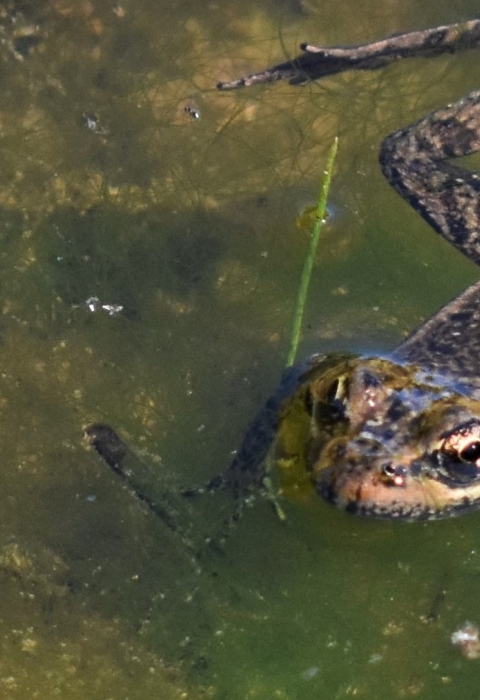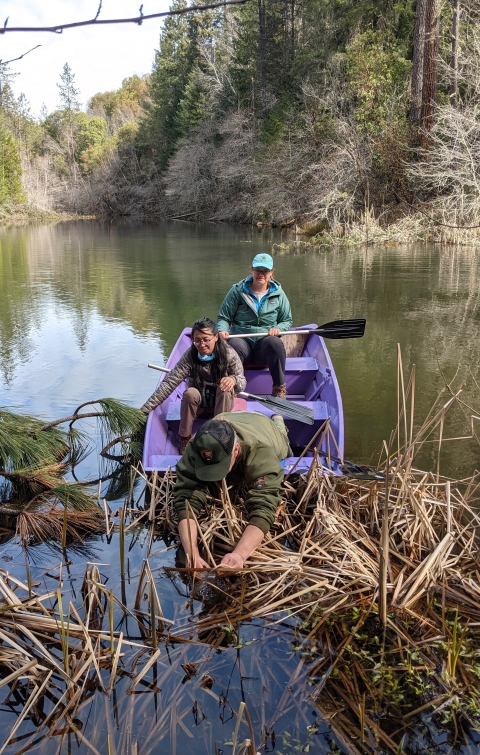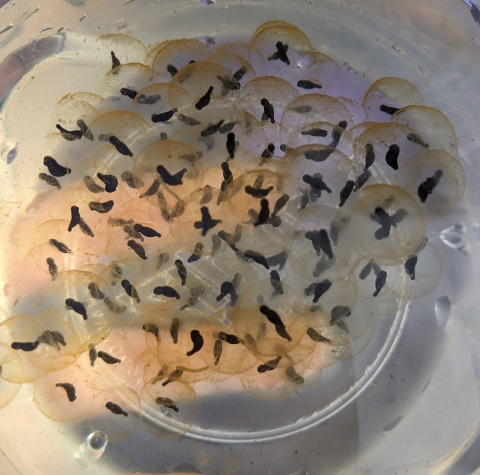In mid-March, biologists from the Sacramento Fish and Wildlife Office accompanied Rob Grasso, aquatic ecologist from Yosemite National Park, in collecting California red-legged frog eggs from a lake owned by a longtime conservation partner.
After carefully gathering a number of slippery egg masses and placing them in coolers, Service biologists took the masses to the San Francisco Zoo. There, the zoo raises the frogs to adulthood. Once fully grown, the frogs are released in ponds at Yosemite National Park where they are monitored by Park biologists.
In partnership with the San Francisco Zoo, Oakland Zoo and Yosemite National Park, this effort is helping recover populations of the California red--legged frog in the Sierra.
“This project highlights the importance of partnerships. We are fortunate to work alongside biologists from the National Park Service, staff at the San Francisco Zoo, and a private landowner, all of whom are dedicated, passionate conservationists. It really does take a team to enact successful conservation,” said Service senior biologist Ian Vogel, who was among the group in the field.
The California red-legged frog is a threatened species that lives in wetlands along the California coast and Sierra foothills. One threat to the frog is the introduction of non-native aquatic predators, including bullfrogs, which prey upon a wide range of species and represent a serious threat to wetland ecosystems. Bullfrog removal has been a focus for managers at Yosemite National Park since 2005, so when the adult red-legged frogs are released into their new lake homes in the park, they will thrive in a restored ecosystem. Click here to learn more about how the Service is helping to recover this species.






